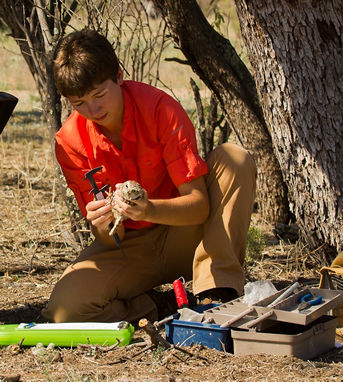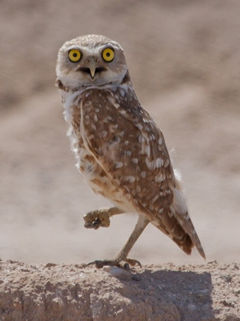Brittany (Brit) Oleson
Background:
I arrived at the Conway lab fresh out of my undergraduate studies at Lawrence University in Appleton, WI, where I received my B.A. in Biology. I grew up in the Midwest but fell in love with the vast open spaces of the West. I especially love living in Arizona, which has such a wide variety of environments, and I am enjoying learning the new plant and animal species. The food out here is also much better than in the Midwest, though I do miss fresh Wisconsin cheese curds and Illinois sweet corn. My interests are broad and varied and I tend to think pretty much everything in the natural world is “cool.” I have several years of field experience working for federal, state, and non-profit agencies on a multitude of projects. These include fisheries research and management in Illinois, raven and greater sage grouse population studies in Wyoming, Mexican gray wolf tracking and management in New Mexico, riparian ecosystem surveys in Arizona, and insectivorous bat collection in the Philippines.
Grad students are known for having copious amounts of free time (har…) and I spend most of mine volunteering for organizations such as the Arizona Game and Fish Department, The Wildlife Society, and Sky Island Alliance. I spend many weekends exploring remote areas; and tracking, calling, and photographing wildlife. While in town, I can often be found riding my favourite roadbike (or at least looking at it and admiring its beauty). No matter where I am or what I am doing, I prefer to surround myself with good food, good people, and good scenery.
RESEARCH
Conversion of native plant communities to large-scale agricultural production regularly results in drastic declines in abundance of native wildlife. However, populations of western burrowing owls (Athene cunicularia hypugaea) have increased in many areas where native plant communities have been converted to agriculture, while populations elsewhere have declined. This pattern suggests that conversion of native vegetation to agriculture is good for burrowing owls, but fecundity of burrow owls is often low in agricultural areas. So, why is burrowing owl abundance positively associated with agriculture in the southwestern U.S.? For my master’s research I am testing three hypotheses to explain why burrowing owls occur at higher densities in agricultural areas compared to areas dominated by native vegetation: 1) food is more abundant in agricultural areas (the prey availability hypothesis), 2) nest burrows are more abundant in agricultural areas (the burrow availability hypothesis), and 3) predation risk is lower in agricultural areas (the predation risk hypothesis). Understanding what factors influence burrowing association with agriculture will help managers design effective management plans for burrowing owls in the region and provide guidance to farm bureaus and irrigation districts on how they can aid burrowing owl recovery.
Though my research doesn’t always take me to the most hospitable places (Blythe in July, anyone?), I love exploring the Southwest. I especially enjoy the diversity of my research; in addition to working directly with burrowing owls, I also get to trap small mammals and invertebrates, survey for birds, and conduct nest predation experiments. Variety is truly the spice of life!


Publications:
- Oleson B.L. 2012. Of Owls and Alfalfa: Why are Burrowing Owls Associated with Agricultural Fields in North America? Annual Cooperators Meeting, Arizona Cooperative Fish and Wildlife Research Unit, Tucson, Arizona, 5 September 2012.
- Oleson B.L., Conway M.C., Dillon K.G., and C.G. Lundblad. 2011. Methods in Avian Ecology. Natural Resources Graduate Student Organization Forum, University of Arizona, Tucson, Arizona, 3 March 2011.
- T&E, Inc. Grant for Conservation Research, $2,500, 2012-2013
- University of Arizona C. P. Patrick Reid Scholarship, $500, 2012-2013
- National Science Foundation Graduate Research Fellowship Honorable Mention, 2012
- National Science Foundation GK-12 BioME Fellowship, $30,000, 2011-2012
- University of Arizona School of Natural Resources Scholarship, $3,106, 2011-2012
- National Science Foundation Graduate Research Fellowship Honorable Mention, 2011
- Mentor Scientist, Arizona Project WET Water Investigations Program, 2011
- Phi Beta Kappa honors society induction, 2010